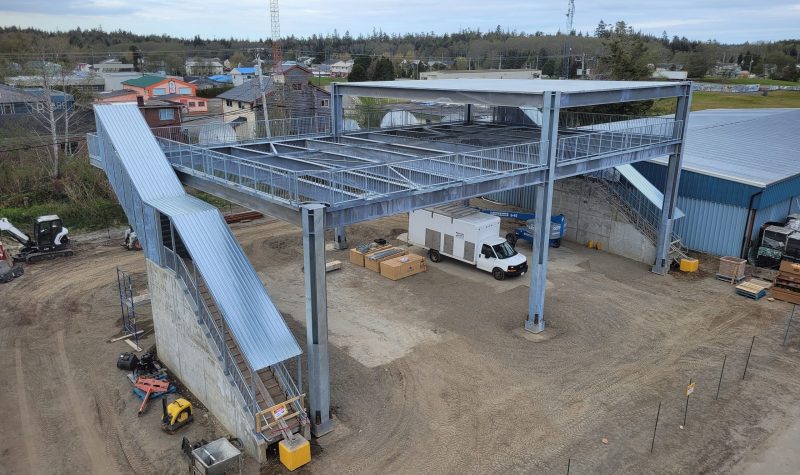Masset, a fishing village on the northern coast of Graham Island, will have greater protection in event of a tsunami when Canada's first tsunami evacuation tower is operational. It is projected to be finished by November 2023.
Graham Island is the largest island on the archipelago of Haida Gwaii. From the shores of North Beach, you can see Alaska. The climate is moderated by a warm Pacific current from Japan and is vulnerable to earthquakes and tsunamis.
Andy Metten, Structural Engineer for Bush, Bowman and Partners and lead engineer on the tower told CICK News "The real need for the tower would be if there was significant shaking from a nearby earthquake that would result in a very quick tsunami happening after that. A few years ago, there was a magnitude 7.8 event off the west coast of Haida Gwaii and it produced some tsunamis that were on some inlets on the west coast, ¨(which were) not inhabited. And those tsunamis would have arrived very quickly after the shaking, because the proximity of the source of the tsunami is very quick."
Metton was on a cultural tour of Haida Gwaii when he was approached about the notion of building a tsunami evacuation tower. The drawings he came up with on that trip were actually very close to the tower that is under construction now.
The tower, once completed, will stand 10 meters tall and will have a capacity of 400 square meters, which is roughly room for 300 people.
"In the movies, they're posed as this enormous wave that's taller than skyscrapers and crashing down and there's no way to survive it. But if we look at the actual footage of real tsunamis, they tend to be a lot lower. There's a very fast rushing of water and lots of debris with it, but designing a tsunami tower is not wildly different than designing a pier that goes out into the ocean that's undergoing waves and debris, like, maybe logs floating in the water and, and, and that sort of thing." Metten explained. "So we need to actually design it twice, and at first is we design it for wind and earthquake. It needs to survive those and be happy at the end of the earthquake and not all damaged and then people need to be able to climb up into, into it safely and, and be there when, when the wave arrives."
The tower is located on school grounds, and the tower is one part of a massive seismic upgrade to the school grounds that it resides on. The other part is a renovation to Gudangaay Tlaat'sa Naay (GTN) Secondary school and Tahaygen Elementary housing around 160 students from grades K to 12.
The Haida Gwaii Board of Education is providing $250,000 while the Government of B.C. has provided $16.5 million to the upgrade. The tower was approved by the Provincial Ministry of Education and Child Care in 2020, and was slated to be completed by the Fall of 2022, but due to delays in getting material and labour, as well as the pandemic's effect on construction projects, it is slated to be finished by November 2023.
Manu Manhok is the interim superintendent for SD50, who has been overseeing this project since he took this role last year. He touted the importance of Andy Metten and the Facilities Manager's advocacy for the tower "for increasing the safety for our kids there. So [I'm] really proud that SD50 is going to be the home of the first tsunami tower in Canada. And I think that's fantastic."
Manu also added that underneath the tower will be a fresh new basketball court, adding to the excitement of this ground-breaking tower.
Listen to the full interview with Andy Metten and Manu Manhok in the link below.


